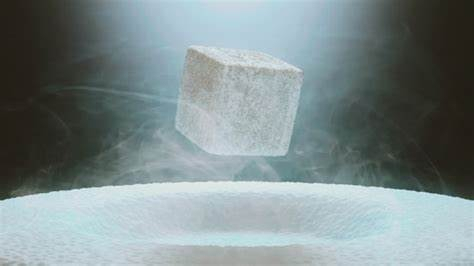A momentous discovery has captured the attention of the scientific community worldwide. A new material known as LK-99, composed of copper, lead, phosphorus and oxygen is creating quite a buzz as a potential room-temperature superconductor.
This remarkable feat, long considered the holy grail of materials science, holds the promise of revolutionizing various fields. The discovery of LK-99, a potential room-temperature superconductor, has sparked excitement among researchers and industry experts. They imagine using LK-99 in various ways, such as improving electricity transmission, revolutionizing transportation, enhancing medical technology, and advancing chip technology. The possibilities are truly exciting.
Exciting Idea
LK-99 is so important that even Ming-Chi Kuo, a respected analyst, believes it could make iPhones as powerful as quantum computers. It’s an exciting idea, but scientists want to be sure it’s true before getting too excited. They are waiting for more proof to confirm if LK-99 is really a game-changer.
What is LK-99 and Superconductivity?
A Korean research team led by Sukbae Lee and Ji-Hoon Kim at the Quantum Energy Research Centre in Seoul, the team reported that a compound called LK-99, made from copper, lead, phosphorus and oxygen, exhibits superconductivity at ambient pressure and temperatures above 127 °C (400 Kelvin).
LK-99 is a compound that has caught the attention of researchers for its possible room-temperature superconducting properties. Superconductivity is a phenomenon where the electrical resistance of a material disappears, allowing electric current to flow without any hindrance. While most materials exhibit resistivity, superconducting materials demonstrate an extraordinary lack of resistance, making them highly energy-efficient. Metals like silver and copper have low resistance, while materials like iron, graphite, rubber, or plastic have high resistance. Achieving superconductivity at ambient conditions has been the holy grail of materials science, as it eliminates the need for extreme temperatures or pressure chambers, opening doors to various scientific innovations.
Potential Impact on iPhones and Other Applications
The prospect of a room-temperature superconductor has ignited excitement, with some envisioning transformative changes across industries. If LK-99 proves to be a genuine superconductor, the implications are far-reaching. For instance, the iPhone, and other mobile devices, could harness computing power comparable to quantum computers. Beyond smartphones, superconductors could revolutionize electronics, energy transmission, transportation, and medicine, making them more efficient and affordable. Applications could range from faster computer chips to improved MRI machines for medical diagnostics.
Concerns Regarding the Discovery
While the initial claims about LK-99’s superconductivity have sparked great interest, the research is not without its skeptics. Scientists are cautious due to the lack of sufficient experimental data supporting the findings. The two research papers have drawn scrutiny, with some experts questioning the accuracy of the reported magnetic properties of LK-99. The absence of robust evidence has led to a call for further scrutiny and replication efforts by other research teams to validate the discovery.
LK-99’s potential as a room-temperature superconductor has captured the imagination of scientists and enthusiasts alike. The discovery, if confirmed, could have far-reaching consequences for various fields of science and technology, unlocking new possibilities and innovations. However, until more evidence is provided and the research undergoes rigorous peer-review, it is essential to approach the claims with caution.





![Centre defers import curbs on laptops, PCs till Nov 1 [details]](https://data1.ibtimes.co.in/en/full/788155/centre-defers-import-curbs-laptops-pcs-till-nov-1.jpg)

